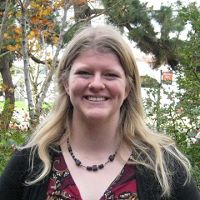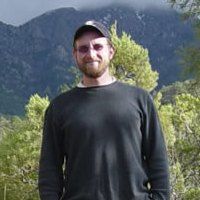Lybrand et al., 2013
Climate and landscape position controls on soil carbon cycling in the Santa Catalina Critical Zone Observatory
Lybrand R., Heckman K., Rasmussen C. (2013)
Abstract presented at AGU Chapman Conference on Soil-mediated Drivers of Coupled Biogeochemical and Hydrological Processes Across Scales, Biosphere 2, Tucson, Arizona, 21-24 October 2013 (Poster)
-
Calhoun, Catalina-Jemez, COLLABORATOR
-
Catalina-Jemez, INVESTIGATOR
Abstract
The objective of this research was to identify climate and topographic controls on soil organic carbon (SOC) cycling across soils in different semiarid ecosystems. The project was performed within the Santa Catalina Critical Zone Observatory in southern Arizona that spans significant range in climate, i.e., mean annual temperature range of >10°C and annual precipitation range of >50 cm yr-1, with a concomitant change in dominant ecosystem from desert scrub to mixed conifer systems. Surface (0-10 cm) and subsurface (30-40 cm) soils were collected from granitic regolith profiles across divergent and convergent landscape positions. Physical SOC distribution in the regolith was quantified using a density and sonication technique to obtain the “free” (non-mineral associated), “occluded” (SOC putatively located within aggregates), and “mineral” (SOC associated directly with mineral surfaces) C pools. The radiocarbon data indicated that the free fractions were composed of the youngest SOC across all ecosystems and landscape positions considered. Conversely, the mineral or occluded fractions contained the oldest SOC depending on the ecosystem. Desert scrub soils stored relatively little C (<1% SOC by weight), with all fractions dominated by fast-cycling SOC. The relatively oldest C was located in the mineral fraction, indicating organo-mineral interactions as the dominant C storage mechanism in this ecosystem. In contrast, the conifer systems contained more SOC (>3%) with the oldest SOC found in the occluded fraction indicating an important role for aggregation as a SOC stabilization mechanism in these sites. A strong landscape position control on SOC distribution was also found in this system in that the fraction of occluded SOC was two times that of the divergent sites. Furthermore, the divergent soils contained ~twice as much SOC in fast-cycling free light fractions relative to the convergent landscape positions where the majority of carbon was associated with occluded and mineral fractions. The physical distribution, chemistry, and mean residence time of convergent SOC suggest a landscape level mechanism that includes the downslope transport and burial of SOC in convergent soils. Bulk SOC at the mixed conifer convergent soil-saprolite interface (~120 cm in depth) indicated a modern Δ14C signal (0.0‰, -16.3‰), suggesting the downward transport of dissolved organic carbon to this location. Indeed, Δ14C of dissolved organic carbon collected from nearby lysimeters confirmed a modern Δ14C signature (19.1‰, 43.5‰). The combined data sets provide the basis for understanding ecosystem and landscape position level variation in SOC stabilization and for constraining how shifts in climate may affect SOC storage across this range of semiarid environments.
Citation
Lybrand R., Heckman K., Rasmussen C. (2013): Climate and landscape position controls on soil carbon cycling in the Santa Catalina Critical Zone Observatory. Abstract presented at AGU Chapman Conference on Soil-mediated Drivers of Coupled Biogeochemical and Hydrological Processes Across Scales, Biosphere 2, Tucson, Arizona, 21-24 October 2013 (Poster).
Explore Further


